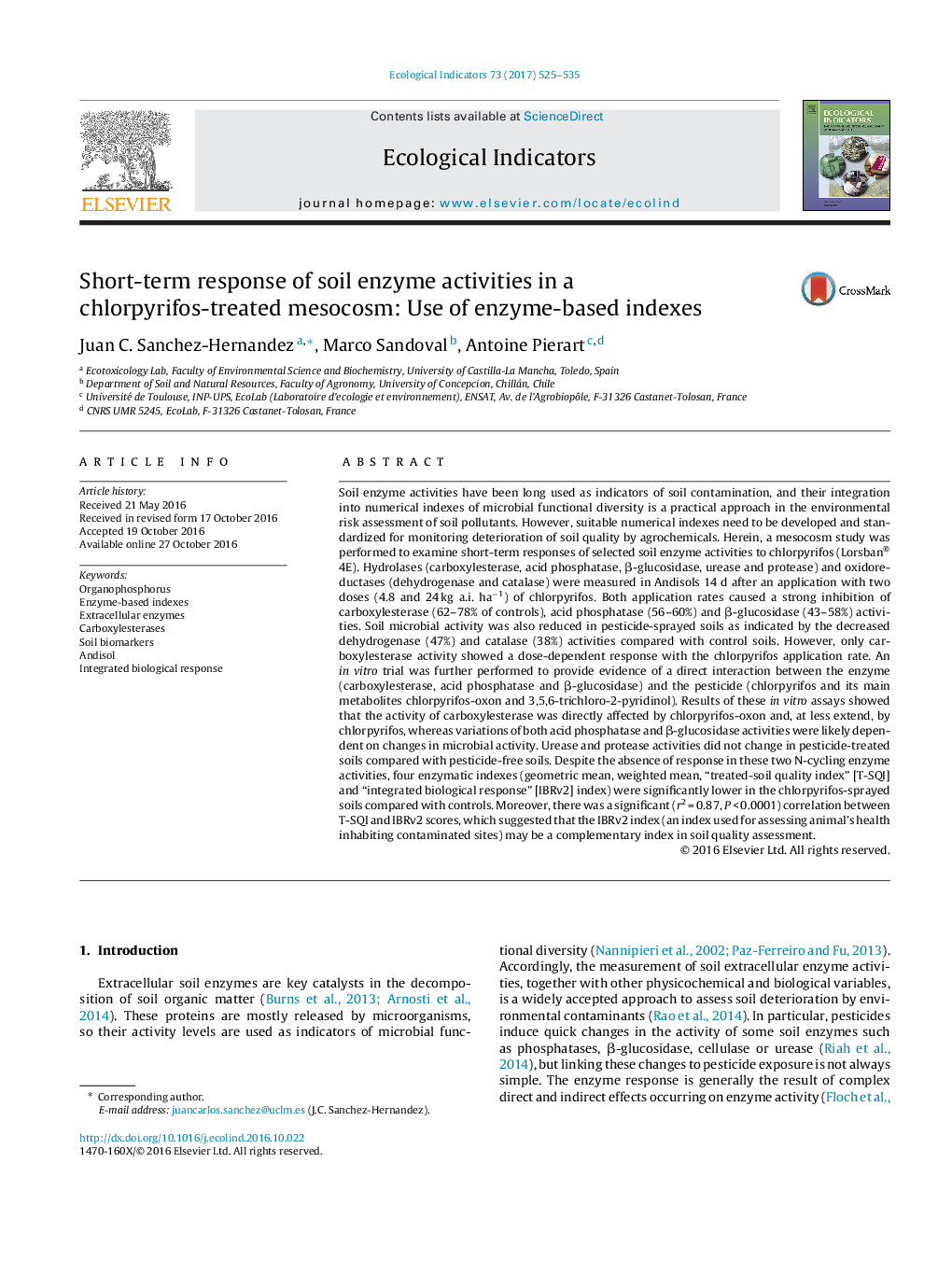| Article ID | Journal | Published Year | Pages | File Type |
|---|---|---|---|---|
| 6292637 | Ecological Indicators | 2017 | 11 Pages |
â¢Chlorpyrifos spraying on Andisol inhibited C- and P-cycling enzymes.â¢The IBRv2 was a feasible index for assessing pesticide-treated soils.â¢Carboxylesterase was a sensitive indicator of organophosphorus contamination.
Soil enzyme activities have been long used as indicators of soil contamination, and their integration into numerical indexes of microbial functional diversity is a practical approach in the environmental risk assessment of soil pollutants. However, suitable numerical indexes need to be developed and standardized for monitoring deterioration of soil quality by agrochemicals. Herein, a mesocosm study was performed to examine short-term responses of selected soil enzyme activities to chlorpyrifos (Lorsban® 4E). Hydrolases (carboxylesterase, acid phosphatase, β-glucosidase, urease and protease) and oxidoreductases (dehydrogenase and catalase) were measured in Andisols 14 d after an application with two doses (4.8 and 24 kg a.i. haâ1) of chlorpyrifos. Both application rates caused a strong inhibition of carboxylesterase (62-78% of controls), acid phosphatase (56-60%) and β-glucosidase (43-58%) activities. Soil microbial activity was also reduced in pesticide-sprayed soils as indicated by the decreased dehydrogenase (47%) and catalase (38%) activities compared with control soils. However, only carboxylesterase activity showed a dose-dependent response with the chlorpyrifos application rate. An in vitro trial was further performed to provide evidence of a direct interaction between the enzyme (carboxylesterase, acid phosphatase and β-glucosidase) and the pesticide (chlorpyrifos and its main metabolites chlorpyrifos-oxon and 3,5,6-trichloro-2-pyridinol). Results of these in vitro assays showed that the activity of carboxylesterase was directly affected by chlorpyrifos-oxon and, at less extend, by chlorpyrifos, whereas variations of both acid phosphatase and β-glucosidase activities were likely dependent on changes in microbial activity. Urease and protease activities did not change in pesticide-treated soils compared with pesticide-free soils. Despite the absence of response in these two N-cycling enzyme activities, four enzymatic indexes (geometric mean, weighted mean, “treated-soil quality index” [T-SQI] and “integrated biological response” [IBRv2] index) were significantly lower in the chlorpyrifos-sprayed soils compared with controls. Moreover, there was a significant (r2 = 0.87, P < 0.0001) correlation between T-SQI and IBRv2 scores, which suggested that the IBRv2 index (an index used for assessing animal's health inhabiting contaminated sites) may be a complementary index in soil quality assessment.
